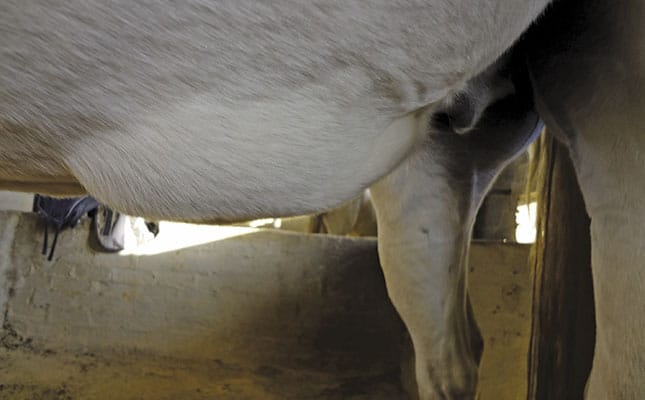
Photo: Kim Dyson
There are several factors that could cause swelling on a horse, and swellings are often quite common. Skin hives, nodules, tumours, local swellings with or without heat and pain, abscesses, subcutaneous swelling, lymph nodes, joint capsules such as windgalls et cetera. There are many different kinds, with many different causes. And where the swelling is located is not as important as understanding the reason for the swelling.
READ: Horses and capped hocks
The first step is to know what you’re dealing with. Here are the most common swellings and their causes:
- Subtle swelling of tissues or joint capsules – If these are cool, non-painful, soft to firm, but pit with pressure, then slowly refill (except if over a joint), they’re usually due to poor circulation, vein or lymph problems, heart disease, kidney failure or liver problems.
- Active swelling of tissue or joint capsules – These are warm, painful and firm, but can pit. Rarely symmetrical, they’ll move downward with gravity. They are usually due to trauma inflammation or infection.
- Bleeding and hematoma – These are usually warm or even hot, and can grow large very rapidly. A ruptured blood vessel or clotting disorder can be the cause.
- Tumours – These are firm and won’t pit if pressed. They are sometimes painful. Enlarged lymph nodes, thyroid gland, salivary glands and cancer are all possibilities here.
- Hard swelling on bones – If caused by trauma, the swelling is usually warm and soft. Splints, growth plate enlargements, fast-growing teeth, inflamed tooth roots and osteoarthritis are all possible causes.
Swellings Under the belly
A lump under your horse’s belly is referred to as a ‘ventral midline swelling’. It’s common in pregnant mares and due to its size and the pull of gravity it can look more serious than it is. Fly-bites can also cause a swelling on the stomach. If the swelling isn’t responsive to exercise, it may be due to a lymphatic blockage.
Pigeon fever
Another cause can be ‘pigeon fever’, which gets its name from the pronounced swelling on the horse’s chest which brings to mind a pigeon puffing out its chest. This disease is caused by a bacterium that survives for a long time in soil. It’s believed to be transmitted to the horse by flies feeding on open sores. The bacteria enter the warm area of the wound and an abscess forms in the chest, sheath or mammary glands, or in the lymph channel in a leg.
The abscess usually takes a few weeks to develop. Symptoms include fever, weight loss and depression. A simple blood test will confirm its presence. Ensure that your stables are treated weekly with fly spray and spray your horse twice a day.
Most swellings respond well to ‘hot and cold’ treatment. Always end with a cold compress. An anti-inflammatory is advisable if the area is hot and painful. It is wise to consult your vet first, however.
Contact Kim Dyson on 082 888 6511 or at [email protected]. Please state ‘Horse therapy’ in the subject line.
This article was originally published in the 05 July 2013 issue of Farmers Weekly.













